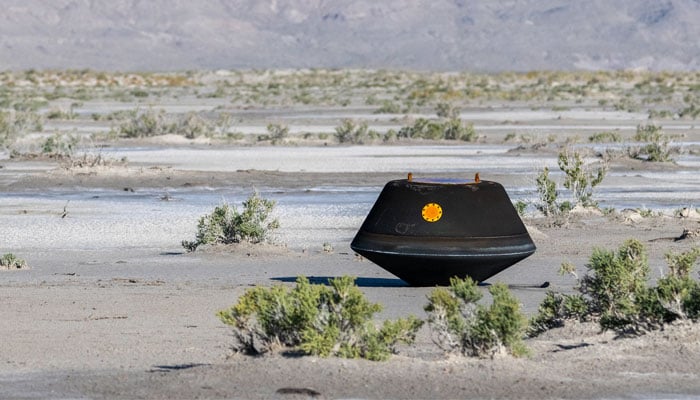WATCH: Nasa's OSIRIS-REx delivers 'most dangerous' asteroid at Utah military base
The asteroid sample successfully delivered to Earth seven years after its launch in 2016
September 25, 2023
Nasa's asteroid sample collection mission sent a chunk of enormous space rock — that may one day collide with our planet in the future — to Earth and it finally touched down at a military base in a Utah desert on Sunday, in a first-of-its-kind mission.
A pristine sample from the near-Earth asteroid Bennu, which will allow researchers to learn more about the origins of life on Earth, was successfully delivered by the Origins, Spectral Interpretation, Resource Identification, Security, Regolith Explorer (OSIRIS-REx) spacecraft seven years after its launch in 2016.
The mission, which spanned 3.86 billion miles, began orbiting Bennu in 2018 and collected the sample in 2020. The spacecraft returned to Earth in May 2021.

The sample capsule containing 8.8 ounces of asteroid rocks and soil from 63,000 miles above Earth's surface, entered the planet's atmosphere at 10:42am ET.
Parachutes were deployed to slow the capsule to a gentle touchdown at 11 miles per hour in the Defense Department's Utah Test and Training Range about 10 minutes after entering the atmosphere, a few minutes ahead of schedule, CNN reported.
The container carrying the asteroid will now be inspected under sterile conditions in a so-called clean room.
According to BBC, Bennu is regarded as the most dangerous rock in the Solar System because, although chances are slim, its path gives it the highest probability of hitting Earth of any known asteroid.
In a video message posted on X, formerly known as Twitter, Nasa administrator Bill Nelson, said: “Congratulations to the Osiris-REx team. You did it. It brought something extraordinary, the largest asteroid sample ever received on Earth.
"This mission proves that Nasa does big things, things that inspire us, things that unite us. It wasn’t mission impossible. It was the impossible that became possible.”
The solar system exploration mission OSIRIS-REx is still going strong and the spacecraft has already taken off to take a close look at another asteroid called Apophis.
This time, the spacecraft continues its kjourney with a new mission named OSIRIS-APEX, which stands for Origins, Spectral Interpretation, Resource Identification, Security-APophis EXplorer.









